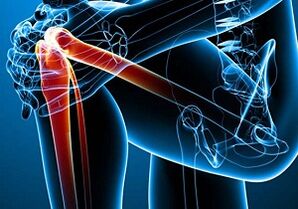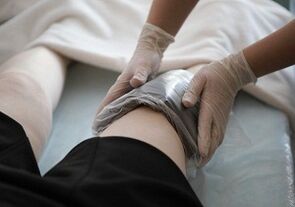People of different ages, especially after 40-50 years, often have joint problems, but without the help of a specialist, it is difficult to determine which disease is developing. Common diseases are arthritis and osteoarthritis. What is the difference, how to treat, how to prevent joint pathologies?
Expert advice on the treatment of diseases of the musculoskeletal system will be useful to many. It is important to understand how to recognize arthritis and osteoarthritis for treatment to be successful.
General signs

Joint pathologies have a common root in the name. Translated from the Greek "arthron" means "wrist".
Osteoarthritis and arthritis are damage to the joints. The pathological process is accompanied by discomfort, pain, damage to cartilage tissue, mobility of the problem area is limited. Both arthritis and osteoarthritis disrupt the patient's normal course of life.
When distinguishing the disease, it is important to take into account all the signs, conduct the necessary studies and analyzes.
Joint pathologies have many differences, incorrect diagnosis reduces the quality of treatment.
Basic information on joint pathologies
It is important to understand not only the similar and characteristic signs of arthrosis and arthritis, but also the causes, types and features of the course of joint pathologies. Understanding the provoking factors, under the influence of which negative processes in cartilage tissue begin, will help prevent disease.
> zxtable border = "1" cellpadding = "0" >What is the difference between arthritis and osteoarthritis?
Joint pathologies have more differences than similar signs. It is easy to distinguish arthritis from arthrosis by knowing the etiology of the disease.
Patient information:
- arthritis develops on the background of the inflammatory process in the joint, arthrosis is a consequence of degenerative processes, degenerative changes in cartilage tissue;
- both pathologies have acute and chronic forms, but arthritis occurs with more pronounced symptoms, inflammation is actively spreading not only to the joint, but also to other areas;
- Osteoarthritis is a long-term disease, remission is longer, and cartilage is gradually destroyed without severe inflammation of the tissues.
The table describes the differences in joint pathologies according to the main characteristics:
> zxtable border = "1" cellpadding = "0" >How to differentiate by symptoms

It is easier to recognize the onset of the disease with an infectious type of pathological changes.
Osteoarthritis often does not manifest itself for a long time, often patients come to the doctor with another, moderate stage of the disease.
Pay attention to the main signs of joint pathologies. Even a small discomfort in the joints should cause suspicion of the development of negative processes in the cartilage tissue.
A correct and timely diagnosis helps to distinguish arthritis from arthrosis and to prescribe the correct treatment.
Arthritis symptoms:
- swelling or severe swelling of the problem area;
- the skin in the affected area becomes red;
- the diseased joint becomes inflamed;
- the affected area is hot to the touch, with active inflammation, the penetration of a dangerous pathogen, the general temperature rises;
- when you move, you hear sharp pain, at rest, pulsation, "twitching", the pain in the area of inflammation does not disappear;
- often the infection affects other parts of the body, health deteriorates, weakness develops, chronic pathologies become more active;
- negative processes often develop in the fingers, hands, ankle, less often in the knees.
Symptoms of osteoarthritis:
- the wavy nature of the pain. In the early phase, the pain is weak, the intensity does not increase for a long time;
- gradually the pain increases, in the morning there is stiffness in the problematic joints;
- as dystrophic changes develop, the mobility of the affected area decreases, in advanced cases complete immobility is possible due to cartilage destruction;
- the main sites of localization are the hip joints (coxarthrosis), spine (spondylarthrosis), knees (gonarthrosis).
The main methods of treating the disease
Patients often believe that a "proven" prescription for arthritis, suggested by a neighbor, will certainly help with osteoarthritis. Ignorance of the nature of the disease often damages the joints, worsens the condition of the organism.

For example, in arthritis there is an active inflammatory process, the infection spreads to a large area of tissue. Warming up is strictly forbidden, but often sufferers warm sore knees with arthritis in hopes of curing it. The result is just the opposite: heat accelerates the development of the inflammatory process, the infection penetrates the blood and lymph into new parts of the joints, other organs, the disease progresses.
The main differences in the treatment of arthritis and osteoarthritis are related to the nature of pathological processes. The scheme of therapy, application of drugs, folk methods, complex exercise therapy, physiotherapy is developed by a rheumatologist, orthopedist or arthrologist. In the advanced stages of arthrosis (rarely, with arthritis), the help of an orthopedic surgeon is needed.
Patient information! Warm bandages are effective for arthrosis, and cold compresses are recommended to alleviate inflammation in arthritis.
Treatment of osteoarthritis
Basic principles:
- the main task is to normalize the condition of cartilage tissue. The doctor prescribes chondroprotectors with hyaluronic acid, chondroitin sulfate and glucosamine. The long course of treatment improves the elasticity of cartilage tissue, restores blood circulation, metabolism, stops degenerative-dystrophic processes;
- in severe cases, NSAIDs are needed to relieve pain, remove inflammation that developed during abrasion of joint tissue. But as a major tool in the treatment of osteoarthritis, they are ineffective;
- physiotherapeutic procedures, special exercises are useful;
- patients successfully apply traditional methods. Homemade fats, decoctions, compresses, baths and tinctures are made from natural ingredients. Proper use of joints relieves pain, improves joint mobility;
- with complete destruction of cartilage tissue, surgical treatment is performed - arthroplasty. Osteoarthritis cannot be completely cured, you can only maintain joint health, prevent exacerbations.
arthritis therapy
Basic principles:
- the first phase is the fight against pathogenic bacteria, dangerous viruses, under the influence of which the inflammatory process began. Nonsteroidal anti-inflammatory drugs are needed;
- it is important not only to destroy the cause of the infection, but also to strengthen the immune system;
- recommended protein diet, vitamin therapy, dairy products. Be sure to refuse alcohol, strong coffee, sweet carbonated drinks, black tea (preferably green);
- Physiotherapy has an excellent effect: electrophoresis with anti-inflammatory drugs, magnetic and laser therapy, therapeutic baths. After stopping the inflammatory process, a complex of exercise therapy, massage will help restore the mobility of the diseased joint. Useful folk methods without the use of heat.
There is a significant difference between arthritis and osteoarthritis. Knowing the characteristics of joint diseases will help the patient to control the course of the pathological process, competently use all available methods of treatment. Under the guidance of an experienced doctor, you can deal with any joint pathology.


















